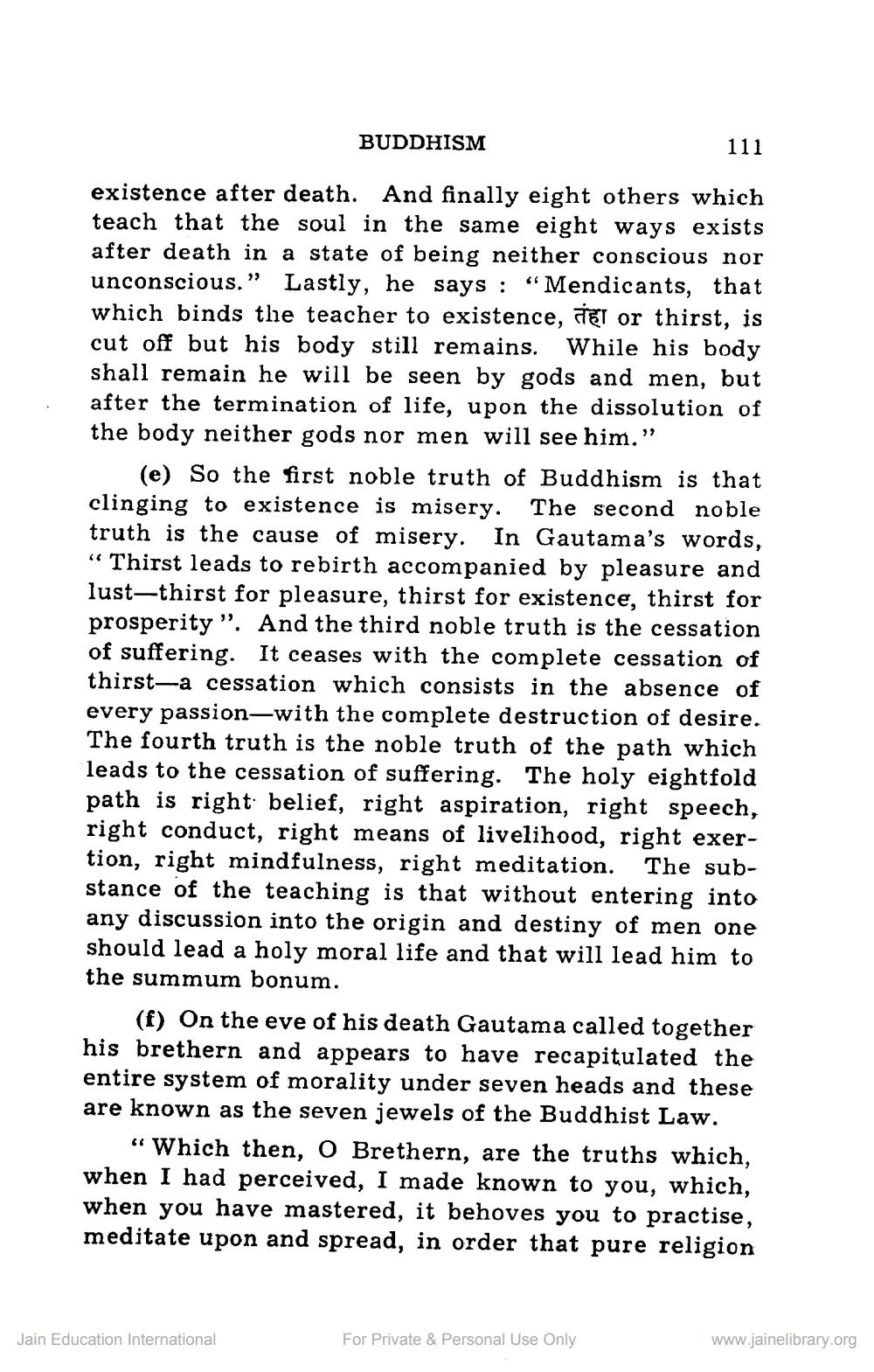________________
BUDDHISM
111
existence after death. And finally eight others which teach that the soul in the same eight ways exists after death in a state of being neither conscious nor unconscious.” Lastly, he says : “Mendicants, that which binds the teacher to existence, del or thirst, is cut off but his body still remains. While his body shall remain he will be seen by gods and men, but after the termination of life, upon the dissolution of the body neither gods nor men will see him."
(e) So the first noble truth of Buddhism is that clinging to existence is misery. The second noble truth is the cause of misery. In Gautama's words, “ Thirst leads to rebirth accompanied by pleasure and lust-thirst for pleasure, thirst for existence, thirst for prosperity". And the third noble truth is the cessation of suffering. It ceases with the complete cessation of thirst-a cessation which consists in the absence of every passion-with the complete destruction of desire. The fourth truth is the noble truth of the path which leads to the cessation of suffering. The holy eightfold path is right belief, right aspiration, right speech, right conduct, right means of livelihood, right exertion, right mindfulness, right meditation. The substance of the teaching is that without entering into any discussion into the origin and destiny of men one should lead a holy moral life and that will lead him to the summum bonum.
(f) On the eve of his death Gautama called together his brethern and appears to have recapitulated the entire system of morality under seven heads and these are known as the seven jewels of the Buddhist Law.
“Which then, O Brethern, are the truths which, when I had perceived, I made known to you, which, when you have mastered, it behoves you to practise, meditate upon and spread, in order that pure religion
www.jainelibrary.org
Jain Education International
For Private & Personal Use Only




